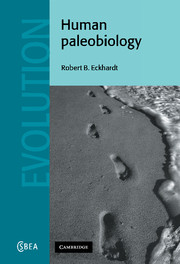Introduction
The power of the adaptability approach for ordering data into frameworks for interpreting patterns of variation in living human populations was established in Chapter 5. As a consequence of its value in framing and testing hypotheses about population norms and variations, this research strategy generally has come to be accepted and used productively among human biologists who carry out investigations on the widely distributed populations of our species, particularly those living in extreme environments such as arctic, desert, and high altitude zones.
As shown in Chapter 6, the adaptability framework also can be extended from its original domain to that of living nonhuman primates. Aside from the behavioral realm, where language and elaborate technological mechanisms distinguish extant humans from other species, the modes by which populations adapt to their environments are shared broadly among mammals. Behavioral, physiological, and developmental, as well as genetic, factors come into play as extant primates, nonhuman and human, meet the challenges posed by the settings into which they have spread. An abundance of research, much of which is summarized by Foley (1987, 1995), clearly supports the inference that the same adaptive spectrum was available in various degrees to hominid populations of the past.
This chapter explores the patterns of phylogenetic relationships hypothesized for the hominids who lived and died over the last five or so million years. Studies of the morphological characters preserved in these fossil remains have led some paleoanthropologists to suggest greater species diversity than is supported by comparative molecular data derived from other groups of extant large mammals such as the bears, cats, and dogs.
